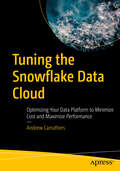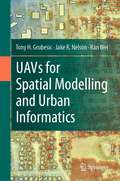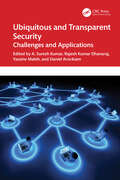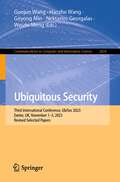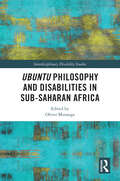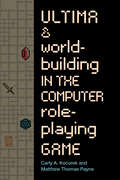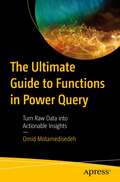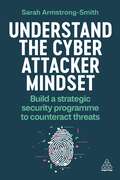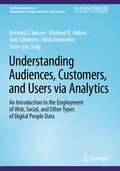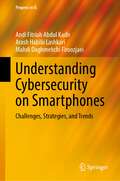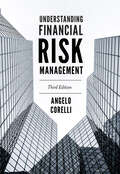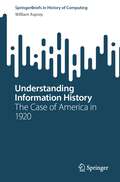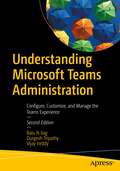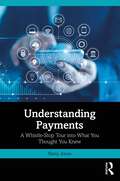- Table View
- List View
Tuning the Snowflake Data Cloud: Optimizing Your Data Platform to Minimize Cost and Maximize Performance
by Andrew CarruthersThis project-oriented book presents a hands-on approach to identifying migration and performance issues with experience drawn from real-world examples. As you work through the book, you will develop skills, knowledge, and deep understanding of Snowflake tuning options and capabilities while preparing for later incorporation of additional Snowflake features as they become available. Your Snowflake platform will cost less to run and will improve your customer experience. Written by a seasoned Snowflake practitioner, this book is full of practical, hands-on guidance and advice specifically designed to further accelerate your Snowflake journey. Tuning the Snowflake Data Cloud provides you a pathway to success by equipping you with the skills, knowledge, and expertise needed to elevate your Snowflake experience. The book shows you how to leverage what you already know, adds what you don’t, and helps you apply it toward delivering for your Snowflake accounts. Read this book to embark on a voyage of advancement and equip your organization to deliver consistent Snowflake performance. What You Will Learn Recognize and understand the root cause of performance bottlenecks Know how to resolve performance issues Develop a deep understanding of Snowflake performance tuning options Reduce expensive mistakes, remediate poorly performing code Manage Snowflake costs
Twitch (Digital Media and Society)
by Mark R. JohnsonTwitch is the leading live streaming platform in most of the world and an integral part of contemporary digital gaming culture. Millions of people broadcast their game play (as well as other activities) to over a hundred million people who regularly visit the site. In this accessible book, Mark R. Johnson offers both a synthesis of existing Twitch research and a new way to understand Twitch as a public forum for gaming. Drawing on ideas of the ancient Greek agora or public forum, Johnson demonstrates how Twitch has become the key location for game players looking to understand what is contemporary, relevant, and important in modern gaming culture. He argues that Twitch has constructed a particular kind of public forum for gaming, an understanding which emerges from analysing the platform through its technological infrastructure, its streamers and viewers, its broadcast content, and its tightly knit communities. While this forum helps shape gaming culture, it also exhibits many of gaming's existing problems with harassment and cultural exclusivity. Despite being the essential public space for contemporary gaming, Johnson shows that Twitch is far more complex than it first appears, and is currently expanding in ways that challenge this – until now – core focus. This book is essential reading for students and scholars of game studies, media studies, and anyone with an interest in the rapidly changing nature of online communication.
Type-3 Fuzzy Logic in Time Series Prediction (SpringerBriefs in Applied Sciences and Technology)
by Oscar Castillo Patricia MelinThis book focuses on the field of type-3 fuzzy logic for applications in time series prediction. The main idea is that a higher type and order of fuzzy logic can help in solving various prediction problems and find better results. In addition, neural networks and fractal theory are employed in enhancing prediction results. In this regard, several hybrid intelligent methods are offered. In this book we test the proposed methods using several prediction problems, like predicting COVID-19 and the stock market. We can notice that when Type-3 fuzzy systems are implemented to model the behavior of systems, the results in prediction are enhanced, because the management of uncertainty is better. For this reason, we consider in this book the proposed methods using type-3 fuzzy systems, neural networks and fractal theory to improve the prediction behavior of the complex nonlinear systems. This book is intended to be a reference for scientists and engineers interested in applying type-3 fuzzy logic techniques for solving complex prediction problems. This book can also be used as a reference for graduate courses like the following: soft computing, fuzzy logic, neural networks, bio-inspired algorithms, intelligent prediction, and similar ones. We consider that this book can also be used to get novel ideas for new lines of research, or to continue the lines of research proposed by the authors of the book.
UAVs for Spatial Modelling and Urban Informatics
by Tony H. Grubesic Jake R. Nelson Ran WeiThis book aims to provide a wide range of real-world applications in using unmanned aerial vehicles (UAVs) for geographic observation, spatial modeling, and urban informatics. Specifically, UAVs are incredibly effective platforms for connecting people, places, and technology. This book explores the utility of UAVs for monitoring, measuring, and improving urban infrastructure systems, urban sustainability, and the urban environment. The dynamism of cities provides opportunities for economic, social, and environmental change, but benchmarking and measuring cities continues to be challenging. This challenge is due, at least in part, to a lack of monitoring systems that can collect and analyze data at a granular enough scale to capture the nuance of local phenomena. UAVs offer a promising mechanism to fill this niche, serving as a measurement platform that can rapidly and inexpensively collect data and monitor change in cities. However, their use is fraught with social, operational, regulatory, and technical challenges for successful deployments. This book provides a resource for urbanists (e.g., planners, geographers, sociologists, epidemiologists, engineers), educators, and students who work with geographic information and seek to enhance these data using data and information from unmanned aerial vehicles. At the same time, we provide operational and methodological frameworks for carrying out these advanced analyses in a manner that considers the challenges of incorporating UAVs in research within the urban environment. We provide six unique applications of UAVs for urban analysis, detailing relevant policy and empirical questions, UAV mission parameters, data collection, spatial modeling, and the associated empirical results. Further, we discuss how best to integrate these results into actionable geospatial intelligence and policy development to improve city infrastructure systems, sustainability, the environment, and neighborhood quality.
Übersetzen im Wandel: Wie Technologisierung, Automatisierung und Künstliche Intelligenz das Übersetzen verändern
by Christoph Rösener Carmen Canfora Torsten Dörflinger Felix Hoberg Simon VargaDer Fachbereich Translations-, Sprach- und Kulturwissenschaft (FTSK) Germersheim der Johannes Gutenberg-Universität Mainz feierte im Jahr 2022 sein 75-jähriges Bestehen. Dieses Jubiläum nahm der Germersheimer Arbeitsbereich Allgemeine und Angewandte Sprachwissenschaft sowie Translationstechnologie (ASTT) zum Anlass, im Rahmen einer Tagung 2022 einen Blick nicht auf die Vergangenheit, sondern die Zukunft des Übersetzerberufs zu werfen. Im Zentrum des Interesses standen dabei die Auswirkungen, die der Übersetzerberuf und die Übersetzerausbildung im Zuge des digitalen Wandels erfahren, der insbesondere in Gestalt der Maschinellen Übersetzung und der fortschreitenden Automatisierung von Übersetzungsprozessen die Branche zunehmend prägt.Welche Kompetenzen müssen Studierenden heute vermittelt werden, damit sie in der Berufswelt von morgen ihren Platz finden? Wie kann man sie mit einer positiven Haltung dem digitalen Wandel gegenüber ausstatten und ihnen somit eine aktive Rolle in diesemSystem ermöglichen?
Ubiquitous and Transparent Security: Challenges and Applications
In an increasingly interconnected digital realm, Ubiquitous and Transparent Security: Challenges and Applications emerges as a guiding beacon through the intricate web of modern cybersecurity. This comprehensive tome meticulously dissects the multifaceted challenges faced in safeguarding our digital infrastructure. From the omnipresence of threats to the evolving landscape of vulnerabilities, this book navigates the complexities with a keen eye, offering a panoramic view of the security terrain.Drawing on a rich tapestry of insights from leading experts, this book transcends the traditional boundaries of security discourse. It unveils innovative strategies and technologies, illuminating the path toward a future where security seamlessly integrates with the fabric of our digital existence. With a keen focus on transparency, it delves deep into the mechanisms that enable a clear, holistic view of security, empowering stakeholders to navigate this dynamic landscape with confidence.From cutting-edge applications to the ethical considerations of ubiquitous security, each chapter acts as a guiding compass, providing actionable insights and fostering a deeper understanding of the intricate balance between accessibility and protection. Ubiquitous and Transparent Security is not merely a book; it’s a roadmap for practitioners, policymakers, and enthusiasts alike, navigating the ever-evolving world of cybersecurity.Each chapter within this compendium illuminates the diverse challenges that confront security practitioners, policymakers, and technologists today. It goes beyond the conventional paradigms, exploring the nuanced intersections between accessibility, transparency, and robust protection. Through a rich amalgamation of research-backed insights, real-world case studies, and visionary forecasts, this book offers a holistic understanding of the evolving threat landscape, empowering stakeholders to fortify their defenses proactively.
Ubiquitous and Transparent Security: Challenges and Applications
by Yassine Maleh Rajesh Kumar Dhanaraj A. Suresh Kumar Daniel ArockiamIn an increasingly interconnected digital realm, Ubiquitous and Transparent Security: Challenges and Applications emerges as a guiding beacon through the intricate web of modern cybersecurity. This comprehensive tome meticulously dissects the multifaceted challenges faced in safeguarding our digital infrastructure. From the omnipresence of threats to the evolving landscape of vulnerabilities, this book navigates the complexities with a keen eye, offering a panoramic view of the security terrain.Drawing on a rich tapestry of insights from leading experts, this book transcends the traditional boundaries of security discourse. It unveils innovative strategies and technologies, illuminating the path toward a future where security seamlessly integrates with the fabric of our digital existence. With a keen focus on transparency, it delves deep into the mechanisms that enable a clear, holistic view of security, empowering stakeholders to navigate this dynamic landscape with confidence.From cutting-edge applications to the ethical considerations of ubiquitous security, each chapter acts as a guiding compass, providing actionable insights and fostering a deeper understanding of the intricate balance between accessibility and protection. Ubiquitous and Transparent Security is not merely a book; it’s a roadmap for practitioners, policymakers, and enthusiasts alike, navigating the ever-evolving world of cybersecurity.Each chapter within this compendium illuminates the diverse challenges that confront security practitioners, policymakers, and technologists today. It goes beyond the conventional paradigms, exploring the nuanced intersections between accessibility, transparency, and robust protection. Through a rich amalgamation of research-backed insights, real-world case studies, and visionary forecasts, this book offers a holistic understanding of the evolving threat landscape, empowering stakeholders to fortify their defenses proactively.
Ubiquitous Networking: 9th International Symposium, UNet 2023, Clermont-Ferrand, France, November 1–3, 2023, Revised Selected Papers (Lecture Notes in Computer Science #14757)
by Essaid Sabir Oussama Habachi Halima Elbiaze Gerard ChalhoubThis book constitutes the refereed proceedings of the 9th International Symposium on Ubiquitous Networking, UNet 2023, held in Clermont-Ferrand, France, during November 01–03, 2023. The 14 full papers included in this book were carefully reviewed and selected from 28 submissions. They were organized in topical sections as follows: artificial intelligence-driven communications; data engineering, cyber security and pervasive services; tactile internet and internet of things; ubiquitous communication technologies and networking.
Ubiquitous Security: Third International Conference, UbiSec 2023, Exeter, UK, November 1–3, 2023, Revised Selected Papers (Communications in Computer and Information Science #2034)
by Guojun Wang Haozhe Wang Geyong Min Nektarios Georgalas Weizhi MengThis book constitutes the proceedings of the Third International Conference, UbiSec 2023, held in Exeter, UK, during November 1–3, 2023.The 29 full papers were carefully reviewed and selected from 91 submissions. They were organized in following topical sections: Cyberspace Security, Cyberspace Privacy, Cyberspace Anonymity
Ubuntu Philosophy and Disabilities in Sub-Saharan Africa (Interdisciplinary Disability Studies)
This book uses Ubuntu philosophy to illuminate the voices of people with disabilities from Sub-Saharan Africa. Disability literature is largely dominated by scholars and studies from the Global North, and these studies are largely informed by Global North theories and concepts. Although disability literature in the Global South is now fast growing, most studies continue to utilise conceptual, theoretical, and philosophical frameworks that are framed within Global North contexts. This presents two major challenges: Firstly, the voices of people with disabilities in the Global South remain on the fringes of disability discourses. Secondly, when their voices are heard, their realities are distorted. This edited book, consisting of 11 chapters, provides case studies from Botswana, Ghana, Lesotho, Uganda, and South Africa, explores disability in various fields: Inclusive education, higher education, environment, Open Distance Learning, and Technical and Vocational Education and Technical Colleges. The book contributes to the ways in which disability is understood and experienced in the Global South thereby challenging the Western hegemonic discourses on disability. This collection of contributions will be of interest to all scholars and students of disability studies, development studies, medical sociology, and African studies.
Ubuntu Philosophy and Disabilities in Sub-Saharan Africa (Interdisciplinary Disability Studies)
by Oliver MutangaThis book uses Ubuntu philosophy to illuminate the voices of people with disabilities from Sub-Saharan Africa. Disability literature is largely dominated by scholars and studies from the Global North, and these studies are largely informed by Global North theories and concepts. Although disability literature in the Global South is now fast growing, most studies continue to utilise conceptual, theoretical, and philosophical frameworks that are framed within Global North contexts. This presents two major challenges: Firstly, the voices of people with disabilities in the Global South remain on the fringes of disability discourses. Secondly, when their voices are heard, their realities are distorted. This edited book, consisting of 11 chapters, provides case studies from Botswana, Ghana, Lesotho, Uganda, and South Africa, explores disability in various fields: Inclusive education, higher education, environment, Open Distance Learning, and Technical and Vocational Education and Technical Colleges. The book contributes to the ways in which disability is understood and experienced in the Global South thereby challenging the Western hegemonic discourses on disability. This collection of contributions will be of interest to all scholars and students of disability studies, development studies, medical sociology, and African studies.
Ultima and Worldbuilding in the Computer Role-Playing Game
by Carly A. Kocurek Matthew PayneUltima and World-Building in the Computer Role-Playing Game is the first scholarly book to focus exclusively on the long-running Ultima series of computer role-playing games (RPG) and to assess its lasting impact on the RPG genre and video game industry. Through archival and popular media sources, examinations of fan communities, and the game itself, this book historicizes the games and their authors. By attending to the salient moments and sites of game creation throughout the series’ storied past, authors Carly A. Kocurek and Matthew Thomas Payne detail the creative choices and structural forces that brought Ultima’s celebrated brand of role-playing to fruition. This book first considers the contributions of series founder and lead designer, Richard Garriott, examining how his fame and notoriety as a pioneering computer game auteur shaped Ultima’s reception and paved the way for the evolution of the series. Next, the authors retrace the steps that Garriott took in fusing analog, tabletop role-playing with his self-taught lessons in computer programming. Close textual analyses of Ultima I outline how its gameplay elements offered a foundational framework for subsequent innovations in design and storytelling. Moving beyond the game itself, the authors assess how marketing materials and physical collectibles amplified its immersive hold and how the series’ legions of fans have preserved the series. Game designers, long-time gamers, and fans will enjoy digging into the games’ production history and mechanics while media studies and game scholars will find Ultima and World-Building in the Computer Role-Playing Game a useful extension of inquiry into authorship, media history, and the role of fantasy in computer game design.
The Ultimate Guide to Functions in Power Query: Turn Raw Data into Actionable Insights
by Omid MotamedisedehThis book is a complete guide to using functions in Power Query and is designed to help users of all skill levels learn and master its various functions. The Ultimate Guide to Functions in Power Query begins with an introduction to Power Query and an overview of the different types of functions available, along with detailed explanations of how to use each of them. You’ll see how to leverage power functions to process and transform large datasets from various sources and learn advanced techniques such as creating custom functions and using conditional statements. The book also covers best practices for using functions, including tips on how to optimize query performance and troubleshoot common errors. Using practical example applications, Author Omid Motamedisedeh demonstrates how to optimize your data processing workflows, saving time and boosting productivity. By the end of the book, readers will have a deep understanding of Power Query functions and be able to apply their knowledge to a wide range of data analysis tasks. What You Will Learn Master the fundamentals of Power Query, including how to load and transform data from various sourcesUnderstand all the functions available in Power Query, including text, date/time, logical, numeric, and moreUse functions to transform data and perform complex calculationsEmploy advanced techniques such as custom functions, conditional statements, and working with parametersOptimize query performance, handle errors, and use the M language effectivelyUse real-world examples and exercises to hone your skills and gain practical experience with the tool Who This Book Is For Anyone who wants to learn how to use functions in Power Query to transform and analyze data. This includes data analysts, business analysts, Excel users, and data scientists. Readers should have a basic understanding of Excel and data analysis concepts, but may be new to Power Query and functions.
Understand the Cyber Attacker Mindset: Build a Strategic Security Programme to Counteract Threats
by Sarah Armstrong-SmithTo counteract a cyber attacker, organizations need to learn to think like one. Understand the Cyber Attacker Mindset explores the psychology of cyber warfare and how organizations can defend themselves against attacks. This book provides a comprehensive look at the inner workings of cyber attackers in the digital age and presents a set of strategies that organizations can deploy to counteract them. With technological advancements in cybersecurity, attackers are increasingly falling back to social engineering and preying on people's vulnerabilities. This book examines different types of cyber attackers, explores their motivations, and examines the methods used. It also reviews key industry developments such as cybercrime as a service, brokers and syndicates, nation-sponsored actors, insider sabotage and the challenges faced by law enforcement in tracking and apprehending attackers. Understand the Cyber Attacker Mindset offers expert, strategic guidance on how organizations can improve their cybersecurity operations in response, including enhancing security awareness training, educating employees to identify and resist manipulation, understanding the importance of cultural variances and how board-level decision-making can directly influence attacks. Written by a renowned cybersecurity leader, the book draws on interviews with ex-criminals and top experts in the field to share rich insights and a wide range of case studies profiling notable groups, such as Anonymous, Lapsus$, FIN7, Nigeria's Yahoo Boys, Sandworm, and the Lazarus Group. The human side of cybersecurity has never been so important.
Understanding Atmospheric Rivers Using Machine Learning (SpringerBriefs in Applied Sciences and Technology)
by Manish Kumar Goyal Shivam SinghThis book delves into the characterization, impacts, drivers, and predictability of atmospheric rivers (AR). It begins with the historical background and mechanisms governing AR formation, giving insights into the global and regional perspectives of ARs, observing their varying manifestations across different geographical contexts. The book explores the key characteristics of ARs, from their frequency and duration to intensity, unraveling the intricate relationship between atmospheric rivers and precipitation. The book also focus on the intersection of ARs with large-scale climate oscillations, such as El Niño and La Niña events, the North Atlantic Oscillation (NAO), and the Pacific Decadal Oscillation (PDO). The chapters help understand how these climate phenomena influence AR behavior, offering a nuanced perspective on climate modeling and prediction. The book also covers artificial intelligence (AI) applications, from pattern recognition to prediction modeling and early warning systems. A case study on AR prediction using deep learning models exemplifies the practical applications of AI in this domain. The book culminates by underscoring the interdisciplinary nature of AR research and the synergy between atmospheric science, climatology, and artificial intelligence
Understanding Audiences, Customers, and Users via Analytics: An Introduction to the Employment of Web, Social, and Other Types of Digital People Data (Synthesis Lectures on Information Concepts, Retrieval, and Services)
by Bernard J. Jansen Kholoud K. Aldous Joni Salminen Hind Almerekhi Soon-gyo JungThis book presents the foundations of using analytics from the laboratory, social media platforms, and the web. The authors cover key topics including analytics strategy, data gathering approaches, data preprocessing, data quality assessment, analytical methods, tools, and validation methods. The book includes chapters explaining web analytics, social media analytics, and how to create an analytics strategy. The authors also cover on data sources, such as online surveys, crowdsourcing, eye tracking, mouse tracking, social media APIs, search logs, and analytics triangulation. The book also discusses analytical tools for social media analytics, search analytics, persona analytics, user studies, and website analytics. The authors conclude by examining the validity of online analytics.
Understanding Cryptography: From Established Symmetric and Asymmetric Ciphers to Post-Quantum Algorithms
by Tim Güneysu Christof Paar Jan PelzlUnderstanding and employing cryptography has become central for securing virtually any digital application, whether user app, cloud service, or even medical implant.Heavily revised and updated, the long-awaited second edition of Understanding Cryptography follows the unique approach of making modern cryptography accessible to a broad audience, requiring only a minimum of prior knowledge. After introducing basic cryptography concepts, this seminal textbook covers nearly all symmetric, asymmetric, and post-quantum cryptographic algorithms currently in use in applications—ranging from cloud computing and smart phones all the way to industrial systems, block chains, and cryptocurrencies.Topics and features:Opens with a foreword by cryptography pioneer and Turing Award winner, Ron RivestHelps develop a comprehensive understanding of modern applied cryptographyProvides a thorough introduction to post-quantum cryptography consisting of the three standardized cipher familiesIncludes for every chapter a comprehensive problem set, extensive examples, and a further-reading discussionCommunicates, using a unique pedagogical approach, the essentials about foundations and use in practice, while keeping mathematics to a minimumSupplies up-to-date security parameters for all cryptographic algorithmsIncorporates chapter reviews and discussion on such topics as historical and societal contextThis must-have book is indispensable as a textbook for graduate and advanced undergraduate courses, as well as for self-study by designers and engineers.The authors have more than 20 years’ experience teaching cryptography at various universities in the US and Europe. In addition to being renowned scientists, they have extensive experience with applying cryptography in industry, fromwhich they have drawn important lessons for their teaching.
Understanding Cybersecurity on Smartphones: Challenges, Strategies, and Trends (Progress in IS)
by Andi Fitriah Abdul Kadir Arash Habibi Lashkari Mahdi Daghmehchi FiroozjaeiThis book offers a comprehensive overview of smartphone security, focusing on various operating systems and their associated challenges. It covers the smartphone industry's evolution, emphasizing security and privacy concerns. It explores Android, iOS, and Windows OS security vulnerabilities and mitigation measures. Additionally, it discusses alternative OSs like Symbian, Tizen, Sailfish, Ubuntu Touch, KaiOS, Sirin, and HarmonyOS.The book also addresses mobile application security, best practices for users and developers, Mobile Device Management (MDM) in enterprise settings, mobile network security, and the significance of mobile cloud security and emerging technologies such as IoT, AI, ML, and blockchain. It discusses the importance of balancing innovation with solid security practices in the ever-evolving mobile technology landscape.
Understanding Financial Risk Management
by Angelo CorelliFinancial risk management is a topic of primary importance in financial markets. It is important to learn how to measure and control risk, how to be primed for the opportunity of compensative return, and how to avoid useless exposure. This third edition of Understanding Financial Risk Management offers an updated version of its innovative approach to such issues. Angelo Corelli analyses the various types of financial risk that a financial institution now face in everyday operations—including market, interest rate, credit, liquidity, operational, currency, volatility, and enterprise risk. He deals with each type of risk using a rigorous mix of analytical and theoretical approaches; he gives introductory overviews to the most relevant statistical and mathematical tools; and he provides innovative analyses of all the major models available in the literature. This broad view of theory and the current state of the industry provides a friendly but serious starting point for those who encounter risk management for the first time, and it offers plenty of food for thought to more advanced readers. For its unique mix of rigour and accessibility, this book is a must-read for finance professionals, and it is of keen interest to finance students and researchers.
Understanding Financial Risk Management
by Angelo CorelliFinancial risk management is a topic of primary importance in financial markets. It is important to learn how to measure and control risk, how to be primed for the opportunity of compensative return, and how to avoid useless exposure. This third edition of Understanding Financial Risk Management offers an updated version of its innovative approach to such issues. Angelo Corelli analyses the various types of financial risk that a financial institution now face in everyday operations—including market, interest rate, credit, liquidity, operational, currency, volatility, and enterprise risk. He deals with each type of risk using a rigorous mix of analytical and theoretical approaches; he gives introductory overviews to the most relevant statistical and mathematical tools; and he provides innovative analyses of all the major models available in the literature. This broad view of theory and the current state of the industry provides a friendly but serious starting point for those who encounter risk management for the first time, and it offers plenty of food for thought to more advanced readers. For its unique mix of rigour and accessibility, this book is a must-read for finance professionals, and it is of keen interest to finance students and researchers.
Understanding Generative AI Business Applications: A Guide to Technical Principles and Real-World Applications
by Irena CroninThis guide covers the fundamental technical principles and various business applications of Generative AI for planning, developing, and evaluating AI-driven products. It equips you with the knowledge you need to harness the potential of Generative AI for enhancing business creativity and productivity.The book is organized into three sections: text-based, senses-based, and rationale-based. Each section provides an in-depth exploration of the specific methods and applications of Generative AI. In the text-based section, you will find detailed discussions on designing algorithms to automate and enhance written communication, including insights into the technical aspects of transformer-based Natural Language Processing (NLP) and chatbot architecture, such as GPT-4, Claude 2, Google Bard, and others. The senses-based section offers a glimpse into the algorithms and data structures that underpin visual, auditory, and multisensory experiences, including NeRF, 3D Gaussian Splatting,Stable Diffusion, AR and VR technologies, and more. The rationale-based section illuminates the decision-making capabilities of AI, with a focus on machine learning and data analytics techniques that empower applications such as simulation models, agents, and autonomous systems.In summary, this book serves as a guide for those seeking to navigate the dynamic landscape of Generative AI. Whether you’re a seasoned AI professional or a business leader looking to harness the power of creative automation, these pages offer a roadmap to leverage Generative AI for your organization’s success.What You Will LearnWhat are the technical elements that constitute the makeup of Generative AI products?What are the practical applications of Generative AI?How can algorithms be designed to automate and improve written communication?What are the latest Generative AI architectures and algorithms?Who This Book Is ForData scientists, data analysts, decision makers, and business executives interested in gaining an understanding of Generative AI products
Understanding Information History: The Case of America in 1920 (SpringerBriefs in History of Computing)
by William AsprayMicrohistory is a technique that has been used effectively by writers of both fiction and nonfiction. It enables the author to cut through the complexities of large swaths of history by focusing on a particular time and place. Microhistories are particularly useful in historical study when a subfield has recently arisen and there are not yet enough monographic studies from which to draw general patterns. This microhistory focuses on a single year (1920) across the United States, with the goal of understanding the various roles of information in this society. It gives greater emphasis to the informational aspects of traditional historical topics such as farming, government bureaucracy, the Spanish flu pandemic, and Prohibition; and it gives greater attention to information-rich topics such as libraries and museums, schools and colleges, the financial services and office machinery industries, scientific research institutions, and management consultancies.
Understanding Microsoft Teams Administration: Configure, Customize, and Manage the Teams Experience
by Balu N Ilag Durgesh Tripathy Vijay IreddyThis book provides solutions, best practices, tips, and workarounds to plan, design, customize, implement, and manage Microsoft Teams in any environment. This revised edition has been updated to reflect all the latest techniques and products, including migration from Skype for Business On-Prem to Microsoft Teams, along with Teams for Education, which includes a range of features and tools that enable teachers and students to collaborate, communicate, and learn in a virtual environment.The book begins with an overview of Microsoft Teams, including its architecture, teams/channels, audio/video meetings, and the phone system. The authors then take you deeper into deployment and management of teams, clients, guests and external access, and live events, followed by a walk-through of network assessment and bandwidth planning for Teams. Here, you will learn about deployment of quality of service and how to configure your phone systems using direct routing and calling plans. Moving forward, you will learn Microsoft Teams administration and policy management along with the migration process of Skype from Business On-Prem to Microsoft Teams. To wrap things up, the authors demonstrate some troubleshooting techniques for call quality issues in Teams, and walk you through various features of Teams for Education and how to utilize them. By the time you turn the last page of Understanding Microsoft Teams Administration, you'll be fully equipped to configure, customize, and control Teams with confidence. Don't just adapt to the future of collaboration—lead it. What You Will Learn Kickstart your journey: Get acquainted with the Teams architecture, from teams and channels to audio/video conferencing and beyondMaster the mechanics: Dive deep into deployment, including crucial aspects like guest access, such as events, and network assessmentElevate call quality: Learn the nuts and bolts of Quality of Service (QoS) and phone systems, including direct routing and calling plansAdmin like a pro: Gain insights into robust policy management, and understand how to navigate the Teams admin portal with finesseGet a grip on network assessment and bandwidth planning tailored specifically for TeamsUnlock secrets of quality of service, direct routing, and customized calling plansMigration simplified: Seamlessly shift from Skype for Business On-Prem to Teams without missing a beatEdu-tech unveiled: Explore Teams for Education and how its myriad features can enrich virtual learning experiences for teachers and students alikeWhat's new: A dedicated chapter exclusively covering Microsoft Teams for Education, focusing on empowering both educators and studentsWho This Book Is For Administrators and technical consultants focused on Microsoft Teams. This book serves as an invaluable resource for those looking to optimize team collaboration and communication within their organizations.
Understanding Payments: A Whistle-Stop Tour into What You Thought You Knew
by Neira JonesThis is the book for professionals in the payments industry. Written in an engaging and accessible style, it enables new and experienced payments practitioners alike to understand the fundamentals of the various payment ecosystems, and to quickly get up to speed on developments in the industry.From cards to bank and alternative payments, the jargon is debunked and myths are busted. For each ecosystem, a simple framework is used: mechanics, economics, risks, and future outlook, enabling comparison and the evaluation of the best applications in different scenarios. The book also provides an overview of the global regulatory landscape. Drawing on real examples throughout, it weaves together the underpinning ecosystem principles, legislation, and key stakeholders. It offers readers practical advice regarding, and insights into, the key disciplines and equips them with an understanding of the key issues and opportunities. Also including an extensive and comprehensive glossary of terms – the first of its kind in the payments industry – this book will be used as an essential reference for years to come. Understanding Payments will enable payments practitioners, private sector corporations, and regulators to keep up with a fast-evolving and extremely competitive industry. It can be used across businesses to help train staff and as part of continuing professional development, and will be useful to those involved in mergers and acquisitions, investors wanting to understand the industry, professional services firms, law firms and consultants, and policy makers.
Understanding Payments: A Whistle-Stop Tour into What You Thought You Knew
by Neira JonesThis is the book for professionals in the payments industry. Written in an engaging and accessible style, it enables new and experienced payments practitioners alike to understand the fundamentals of the various payment ecosystems, and to quickly get up to speed on developments in the industry.From cards to bank and alternative payments, the jargon is debunked and myths are busted. For each ecosystem, a simple framework is used: mechanics, economics, risks, and future outlook, enabling comparison and the evaluation of the best applications in different scenarios. The book also provides an overview of the global regulatory landscape. Drawing on real examples throughout, it weaves together the underpinning ecosystem principles, legislation, and key stakeholders. It offers readers practical advice regarding, and insights into, the key disciplines and equips them with an understanding of the key issues and opportunities. Also including an extensive and comprehensive glossary of terms – the first of its kind in the payments industry – this book will be used as an essential reference for years to come. Understanding Payments will enable payments practitioners, private sector corporations, and regulators to keep up with a fast-evolving and extremely competitive industry. It can be used across businesses to help train staff and as part of continuing professional development, and will be useful to those involved in mergers and acquisitions, investors wanting to understand the industry, professional services firms, law firms and consultants, and policy makers.
